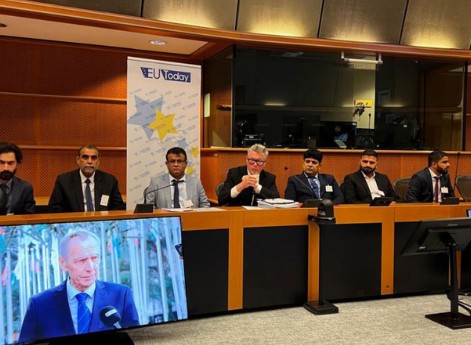
In the shadows of Pakistan’s teeming cities and impoverished rural belts, a booming narcotics trade continues to expand with deadly consequences.
Once viewed as a conduit for the Afghan heroin pipeline, Pakistan is now grappling with its own entrenched drug epidemic—one that thrives amid police collusion, judicial lethargy, and the abysmal failure of enforcement mechanisms.
From Karachi to Peshawar, the plague of narcotics has become deeply rooted in the country’s underbelly, infiltrating schools, prisons, and entire communities.
Yet what makes this crisis particularly devastating is not only the drugs themselves—but the impunity with which they are produced, transported, and sold.
Despite repeated public pledges by successive governments to clamp down on the trade, drug trafficking in Pakistan has morphed into a parallel economy.
Heroin, hashish, crystal meth, and even synthetic opioids like fentanyl now circulate widely—often with the quiet complicity of those who are supposed to fight the scourge.
For many within the law enforcement apparatus, the drug trade has become less of a threat and more of an opportunity.
Nowhere is this betrayal of public duty more glaring than within the police force.
Across multiple provinces, whistleblowers, journalists, and anti-narcotics activists have exposed a disturbing pattern: drug kingpins and mid-level traffickers routinely operate under police protection.
From securing safe passage through checkpoints to tipping off dealers about imminent raids, law enforcement officers have become integral cogs in the machinery of drug distribution. In some cases, they are the machinery.
In major cities like Lahore and Islamabad, entire neighbourhoods have become known hubs for drug activity.
Residents speak in hushed tones of how certain officers “collect envelopes” in exchange for ignoring narcotics activity or releasing arrested peddlers without charge.
Underpaid and often poorly trained, many in the police have succumbed to the temptations of easy money. Internal accountability mechanisms—where they exist—are either weak or subject to the same corruption they’re meant to address.
The Anti-Narcotics Force (ANF), Pakistan’s designated federal agency to combat drug smuggling, has been largely ineffective.
Understaffed and under-resourced, it faces an uphill battle against a narcotics empire with deep financial and political roots.
While the ANF occasionally makes high-profile seizures and arrests, these operations rarely lead to meaningful prosecutions. Cases drag on for years, and witnesses often withdraw under pressure or vanish entirely.
The Pakistani justice system, already burdened by delays and inefficiency, is ill-equipped to handle the complexity of narco-criminal cases.
Judges, fearing retribution, are hesitant to convict powerful traffickers.
Investigations are routinely sabotaged by compromised officers or flawed from the outset due to a lack of forensic and technical capacity.
The result is a culture of impunity that emboldens criminals and crushes the morale of those few law enforcement officers who do seek genuine accountability.
Even more disturbing is the increasing normalisation of drug use among youth, particularly in urban educational institutions.
University students report the availability of hashish, ecstasy, and even methamphetamines on campuses.
According to conservative estimates, over 7 million people in Pakistan are drug-dependent—many of them under the age of 30.
Two years ago, a report by the UN Office on Drugs and Crime (UNODC) warned of an “invisible epidemic” spreading across Pakistani youth, exacerbated by the state’s failure to provide meaningful rehabilitation or prevention programmes.
In Balochistan, the situation is even more alarming.
The province has long been a smuggling corridor between Afghanistan and Iran, but in recent years it has also become a production hub.
Crystal meth, or “ice,” is now being manufactured in rudimentary labs in remote areas, shielded by tribal allegiances and often protected by law enforcement themselves.
Smugglers pay bribes at every checkpoint, and local officials—some of whom have direct stakes in the trade—ensure that interference remains minimal.
The drug economy has also begun to distort local economies. In certain districts of Khyber Pakhtunkhwa and Sindh, drug money has seeped into land purchases, construction projects, and even politics.
Narco-influenced candidates fund election campaigns with dirty money and use political office to shield their operations.
When drug empires reach this level of sophistication and protection, enforcement becomes not just a logistical challenge, but a political impossibility.
For Pakistan’s most vulnerable—its poor, its unemployed, its addicted—the price of this negligence is measured in broken families, ruined futures, and premature deaths.
Rehabilitation centres are few and often inaccessible, and government initiatives on awareness are sporadic at best.
Meanwhile, the streets continue to flood with dangerous substances, sold with near impunity by dealers who know the worst they’ll face is a temporary arrest—or more often, no arrest at all.
International observers, including the Financial Action Task Force (FATF), have long criticised Pakistan’s lacklustre performance in tackling money laundering and drug-financed terror networks.
Yet meaningful change remains elusive.
Too many power centres benefit from the status quo. Too many careers are built on silence or complicity.
And too few voices within the political or security establishment are willing to confront the ugly truth: Pakistan is losing its war against drugs not because the enemy is too strong, but because its guardians are too compromised.
The nexus of drugs and power is not new in Pakistan, but its current scale and brazenness signal a crisis reaching its peak.
This is no longer merely a criminal justice issue. It is a national security threat, a public health catastrophe, and a moral indictment of a system that has allowed greed and apathy to drown out responsibility. For every trafficker who walks free, for every official who looks the other way, another Pakistani slips into the abyss—while the republic continues to rot from within.






